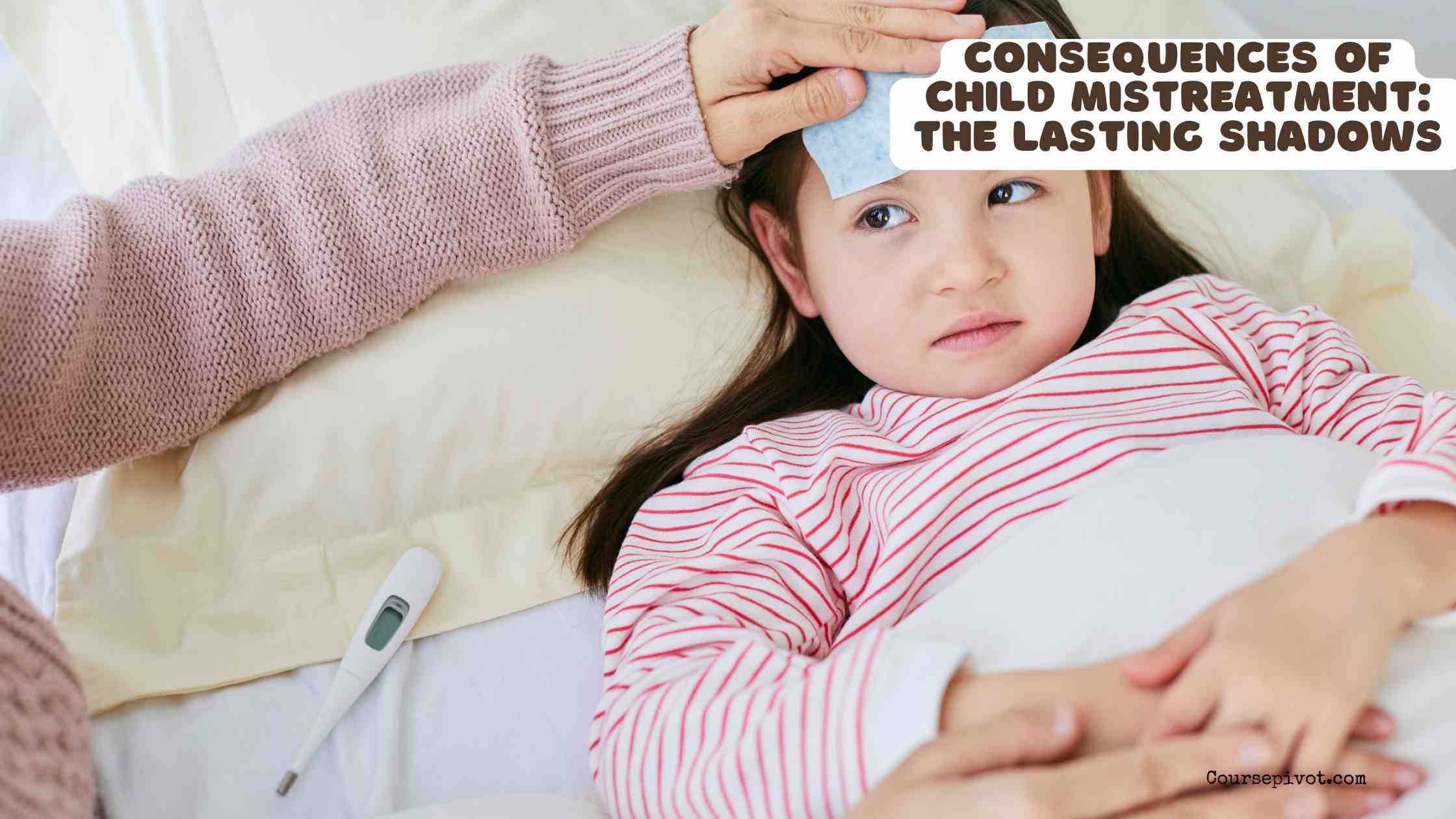
Consequences of Child Mistreatment
Child mistreatment leaves scars that extend far beyond childhood, shaping lives in profound ways. According to the World Health Organization, children who experience violence are 13% more likely to not graduate from school.
This statistic underscores a harsh reality: mistreatment isn’t just immediate harm—it’s a ripple effect touching health, behavior, and society. This blog explores the key consequences of child mistreatment, highlighting why addressing it is crucial for individual and communal well-being.
Table of Contents
Physical Health Ramifications
Mistreatment often results in immediate injuries, but the long-term physical toll is staggering. Chronic conditions like heart disease, lung issues, and diabetes emerge in adulthood due to early stress and trauma. The Adverse Childhood Experiences (ACE) Study revealed that those with high ACE scores, including abuse and neglect, face elevated risks for obesity and liver disease.
For instance, a neglected child might suffer from malnutrition, leading to stunted growth and weakened immunity. Over time, this manifests as frequent illnesses or autoimmune disorders. Physical abuse, such as shaking, can cause brain injuries, resulting in disabilities that persist lifelong.
Mental Health Toll
The psychological impact of child mistreatment is profound and enduring. Victims frequently develop anxiety, depression, and post-traumatic stress disorder (PTSD). Research shows that 46% of women with a history of childhood sexual abuse experience major depressive episodes, compared to 28% without such history.
Emotional abuse, like constant belittling, fosters low self-esteem and suicidal thoughts. A child ridiculed at home might carry internalized shame into adulthood, struggling with relationships. These mental health issues can lead to substance use disorders as coping mechanisms, compounding the harm.
Behavioral and Social Challenges
Mistreated children often exhibit risky behaviors that echo their trauma. High-risk sexual activities, substance abuse, and violence—either as perpetrators or victims—are common outcomes. The WHO notes that maltreatment increases the likelihood of alcohol misuse and unintended pregnancies in adulthood.
Socially, distrust and isolation prevail. A child exposed to domestic violence might withdraw from peers, fearing vulnerability. This leads to difficulties in forming healthy bonds, perpetuating cycles of loneliness and revictimization.
Cognitive and Educational Impacts
Brain development suffers under mistreatment, impairing cognitive functions like memory and decision-making. Toxic stress disrupts neural pathways, affecting learning and focus. Studies indicate that maltreated children perform poorly academically, with higher dropout rates.
Consider a student neglected at home, arriving at school hungry and distracted. Their grades slip, limiting future opportunities. Long-term, this translates to reduced employment prospects and economic instability.
Intergenerational and Societal Effects
Mistreatment often repeats across generations, as abused children become parents who struggle with nurturing. This cycle burdens society with higher healthcare and welfare costs. The ACE Study links child abuse to increased criminal behaviors and strained community resources.
Economically, the fallout is immense—hospitalizations, mental health services, and lost productivity drain billions. Communities with high mistreatment rates see diminished quality of life, underscoring the need for systemic intervention.
Why These Consequences Matter
The consequences of child mistreatment ripple outward, affecting not just individuals but entire societies. Untreated trauma leads to a workforce plagued by health issues, with 50% of mistreated children developing mental disorders later in life.
This hampers innovation and economic growth, while fostering inequality.
On a personal level, survivors deserve healing to break free from shadows of the past. Addressing mistreatment through awareness and support builds resilient communities. It’s a moral imperative: protecting children safeguards our collective future.
Practical Tips to Mitigate and Address Consequences
Combating the effects of child mistreatment requires proactive steps from individuals and communities. Here are strategies to help:
- Promote Early Intervention: Encourage reporting suspected abuse to authorities or hotlines like Childhelp. Early support can prevent long-term damage.
- Access Mental Health Resources: Seek therapy for survivors, such as cognitive-behavioral therapy, to manage PTSD and depression. Organizations like the National Alliance on Mental Illness offer guidance.
- Foster Supportive Environments: Schools can implement trauma-informed programs to aid affected students’ learning. At Coursepivot, we assist students researching these topics through tutoring and essay help, empowering them to advocate.
- Build Resilience: Engage in family strengthening programs that teach positive parenting. Resources from Prevent Child Abuse America provide tools.
- Advocate for Policy Change: Support laws funding child welfare and mental health services. Community involvement amplifies impact.
| Strategy | Benefit | Resource/Example |
|---|---|---|
| Early Intervention | Halts escalation of harm | Childhelp hotline, local services |
| Mental Health Resources | Reduces anxiety and depression | NAMI, therapy sessions |
| Supportive Environments | Improves academic outcomes | Trauma-informed schools, Coursepivot tutoring |
| Build Resilience | Breaks intergenerational cycles | Prevent Child Abuse America programs |
| Policy Advocacy | Enhances systemic protection | Legislative campaigns, petitions |
These actions empower survivors and prevent future mistreatment. Educators and parents can collaborate, while platforms like Coursepivot support academic exploration of these issues in term papers.
Key Takeaways
Child mistreatment yields devastating consequences, from physical ailments like chronic diseases to mental health struggles including depression and PTSD. Behavioral risks, cognitive impairments, and societal burdens further compound the impact, affecting education, relationships, and economies. By understanding these effects—backed by studies showing dose-response links—we can prioritize prevention and healing.
Practical steps, such as early reporting and therapy, offer hope for mitigation. Resources and advocacy, including educational support from Coursepivot, play vital roles in breaking cycles. Ultimately, addressing child mistreatment fosters healthier individuals and stronger communities, turning awareness into action for a brighter tomorrow.
Cite this article
You can copy and paste your preferred citation format below.
Martin, L. & Arquette, E.. (2025, August 1). Consequences of Child Mistreatment. Coursepivot.com. https://coursepivot.com/blog/consequences-of-child-mistreatment/


